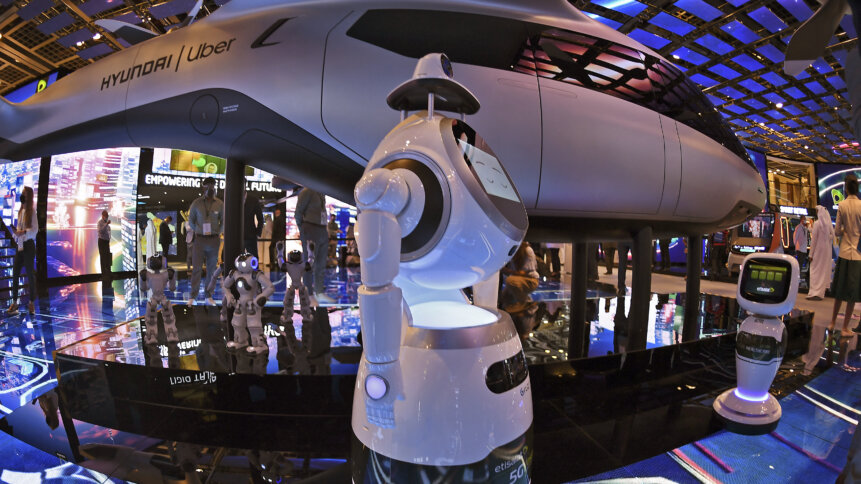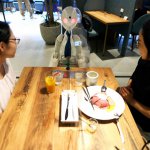Virtual humans, humanoid robots – Is there room still for people jobs?

Virtual humans and humanoid robots are the future applications within many industries. While technology has enabled all of these to be a reality, the question that comes to mind is what’s going to happen to humans when automated solutions began replacing them?
Nowadays humans continue to rely on more technologies for an enhanced experience, be it at work or home. Enterprises have been benefiting massively from the continuous productivity brought about by machines, automated processes, and seamless integration of tools.
Whereas consumers have also been using technologies to ease their daily activities. In the past, a person would need to go out and physically hail a cab. Now, rideshares can be booked online via an app on a mobile device. Automated cars are solving road pain points that most drivers face, while automated surveillance bots and drones are helping both businesses and consumers have better security.
Interestingly, the World Robotics 2020 Industrial Robots report found 2.7 million robots already working across the world. The report also showed that sales of new robots remain high with 373,000 units shipped globally in 2019.
China is still by far the largest automation adopter, with robots numbering 783,000 in 2019. Japan ranked second with 355,000 bots, followed by the US, South Korea and Germany. The adoption of human-robot collaboration is also on the rise, with cobot installations growing by 11%.
Countries with aging populations have also seen more robots taking over their jobs. Reuters reported a study that looked at demographic and industry-level data in 60 countries, and found that age alone accounted for 35% of the variation between countries in their adoption of robots, with those having older workers far more likely to adopt the machines.
Will robots outnumber humans?
Amazon just unveiled Astro, its first robot for homes. The robot is expected to enhance smart homes with new features. It’s designed to help customers with a range of tasks like home monitoring and keeping in touch with family members. Amazon also has several other robots that help businesses with their tasks. This includes autonomous robots in warehouses and robots for delivery.
Elon Musk’s Telsa Bot, which was unveiled several weeks earlier, was designed with most of the same technology for Tesla’s autonomous vehicles. While the bot was designed to handle dangerous, repetitive, and boring tasks in extreme working environments, there are concerns that these bots will eventually replace more jobs in the market. Named Optimus, Tesla’s humanoid robot has features that it even more concerning — as some feel the robot may become self-aware and destroy humanity.

(Photo by Mladen ANTONOV / AFP)
With Amazon and Tesla busy developing humanoid robots to make lives easier for humans in the future, Huawei has also been busy behind the scenes. The Chinese technology company, which has been constantly viewed as a threat in the US, has developed its first virtual human. Called Yunsheng, the virtual human is also the company’s first virtual human employee.
According to reports, Huawei developed YunSheng by using AI Automatic modeling, AI Voice drive, and AI rendering acceleration. These three technologies helped Huawei to form a perfect virtual human. During the official introduction at Huawei Connect 2021, Yunsheng introduced Huawei Cloud use cases in a different and funky manner.
It’s still uncertain as to what type of job will the virtual human will actually do at Huawei, but from the looks of it, YunSheng is only the mainstream trendsetter of what will eventually be more virtual humans in the future, with more capabilities. In fact, judging by its demo during the summit, the virtual human may just improve customer experiences in e-commerce, providing a seamless human-like experience to customers.
With Astro, Optimus, and YunSheng showcasing how they work with humans, the question now is: what will humans do if everything is being done for them? Will humans finally be able to have machines take over all mundane tasks and spend the rest of their lives doing more quality work, or will it only lead to humans becoming lazier as technology does everything for them.
AI is already enabling robots to read, write and learn. Deep learning AI is enabling machines to do a lot more and make more accurate decisions. 5G is enabling machines to be connected stronger more than ever before. Digital currency is becoming more valuable than actual money.
Most technologists would feel that humans will eventually still be in control of their own lives, and have downplayed most of the scenarios in Hollywood robotic films. The reality is though, robots are slowly taking over jobs and increasing their presence around us. They are watching humans and learning new skills.
They are predicting what we need and what we want. They are also providing our health and how we live. Only time will tell if these machines will take over the world.









